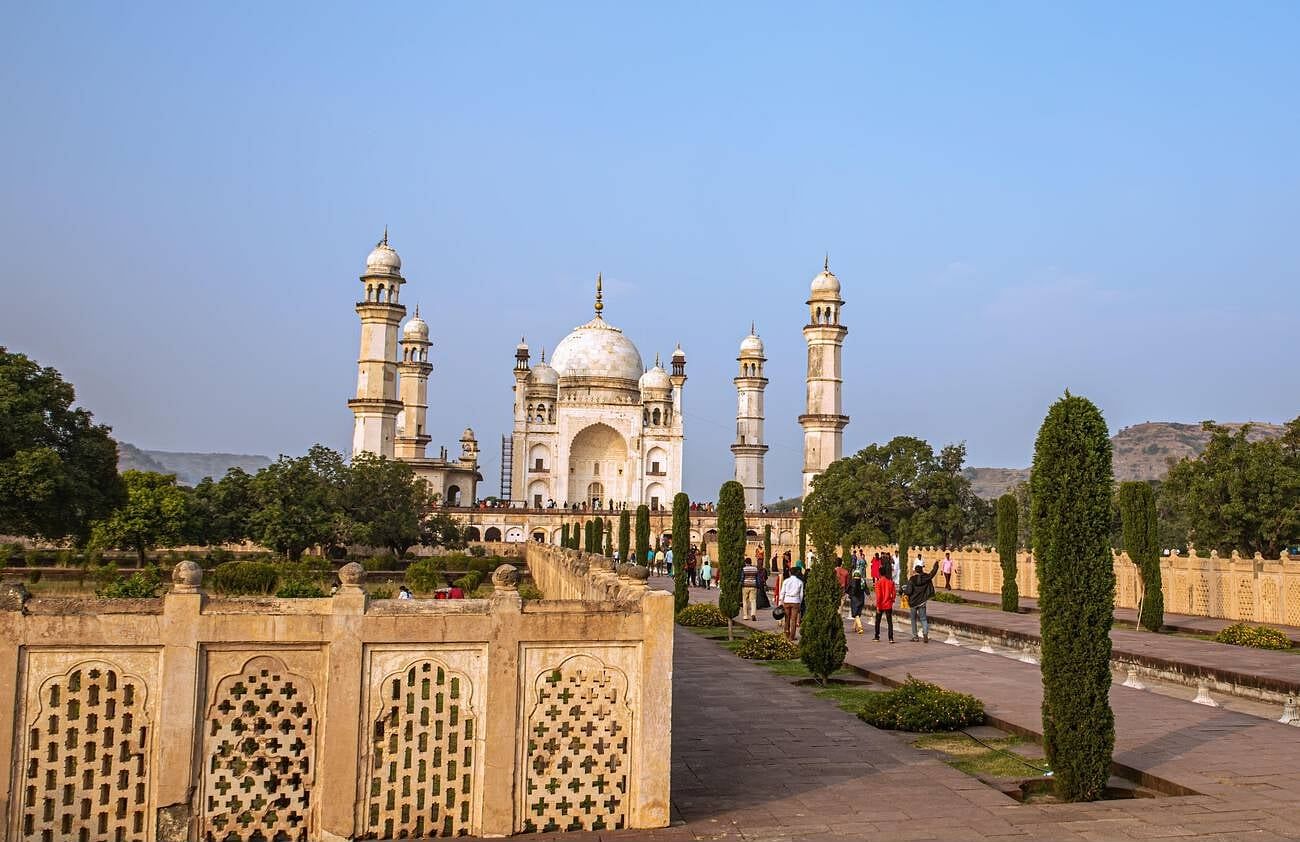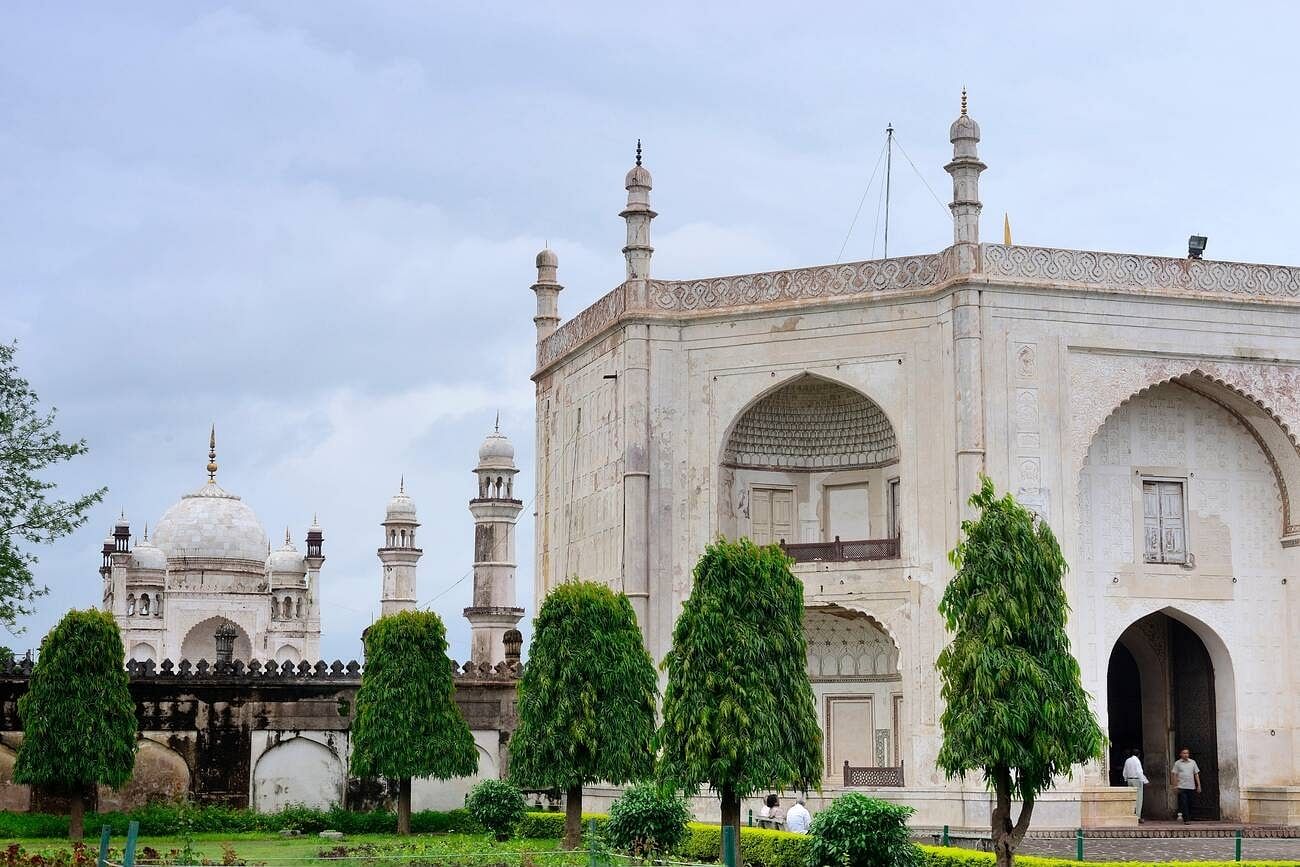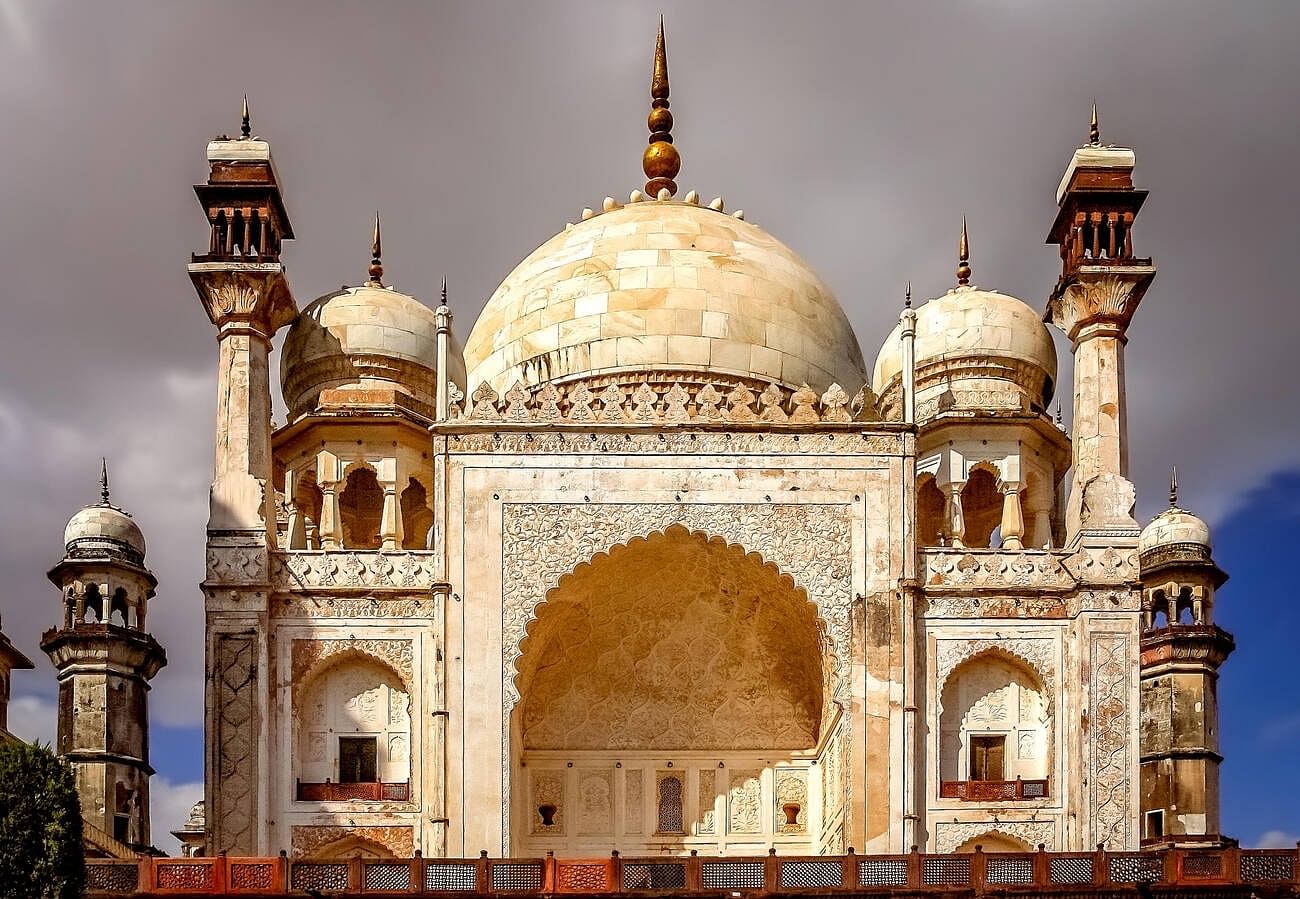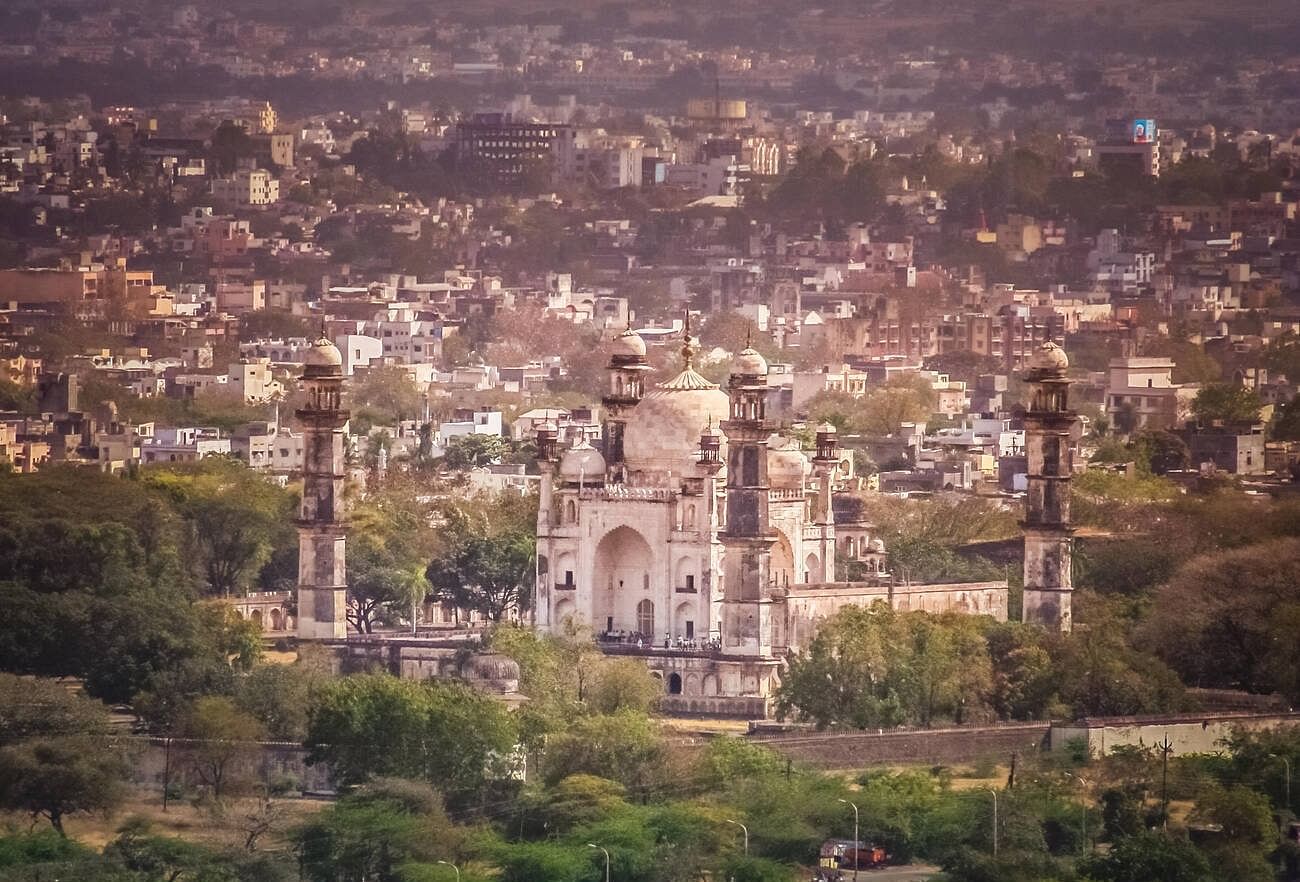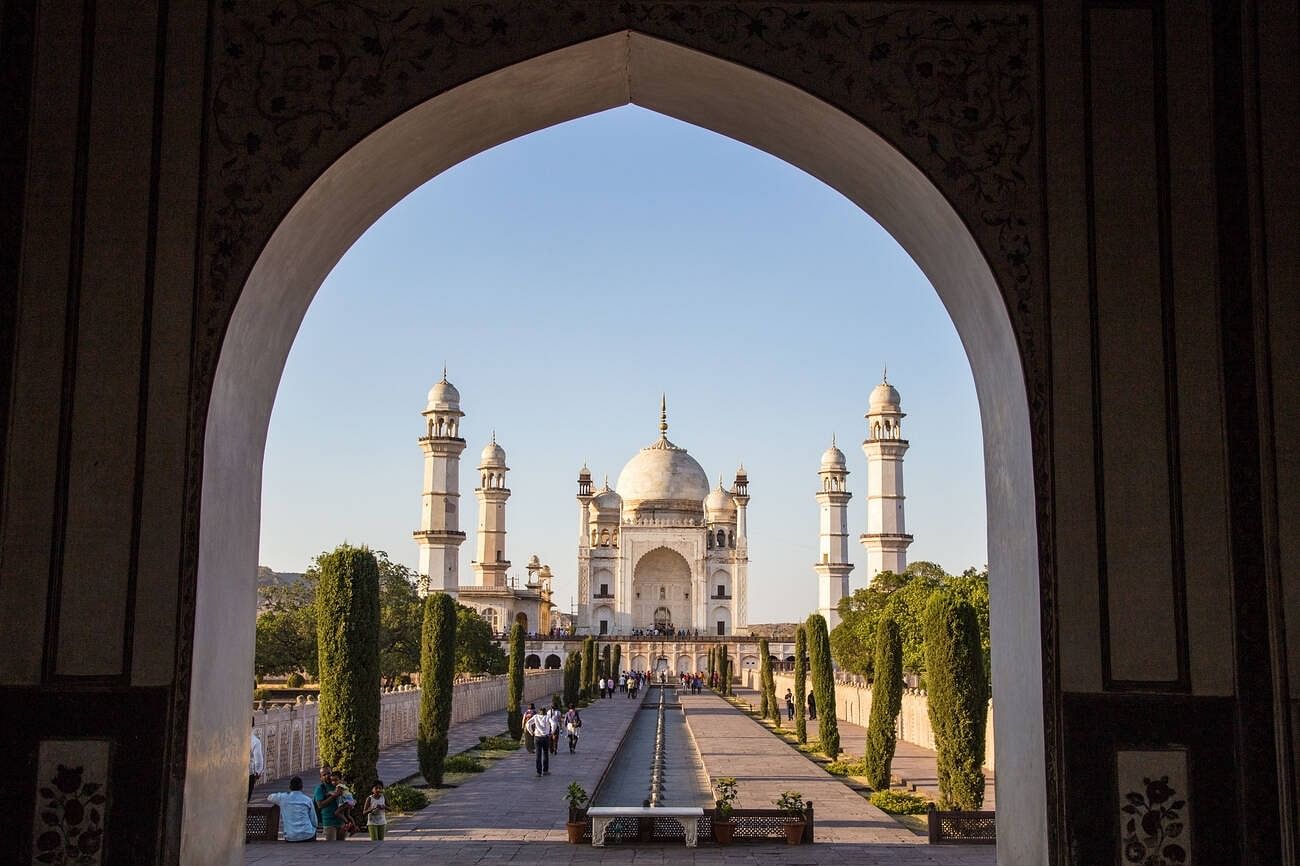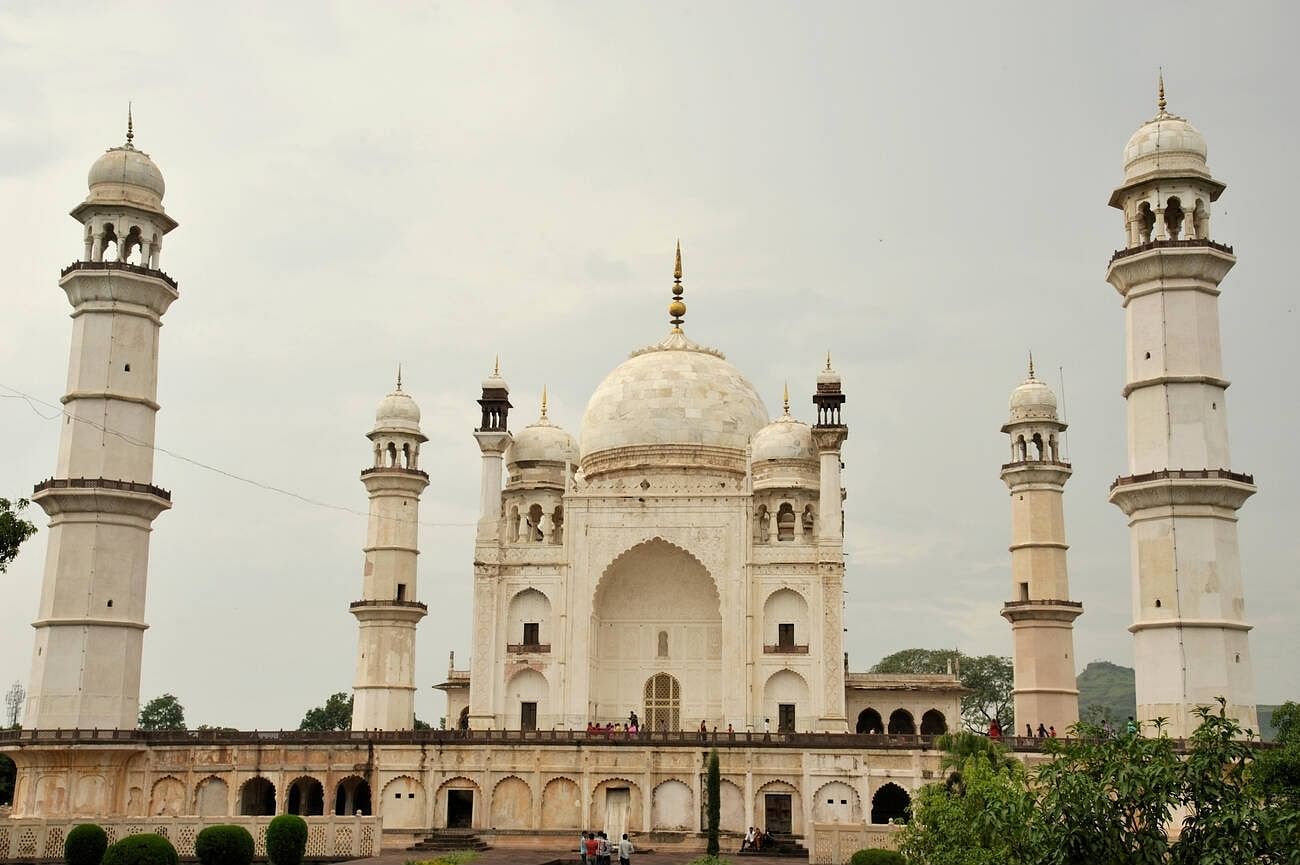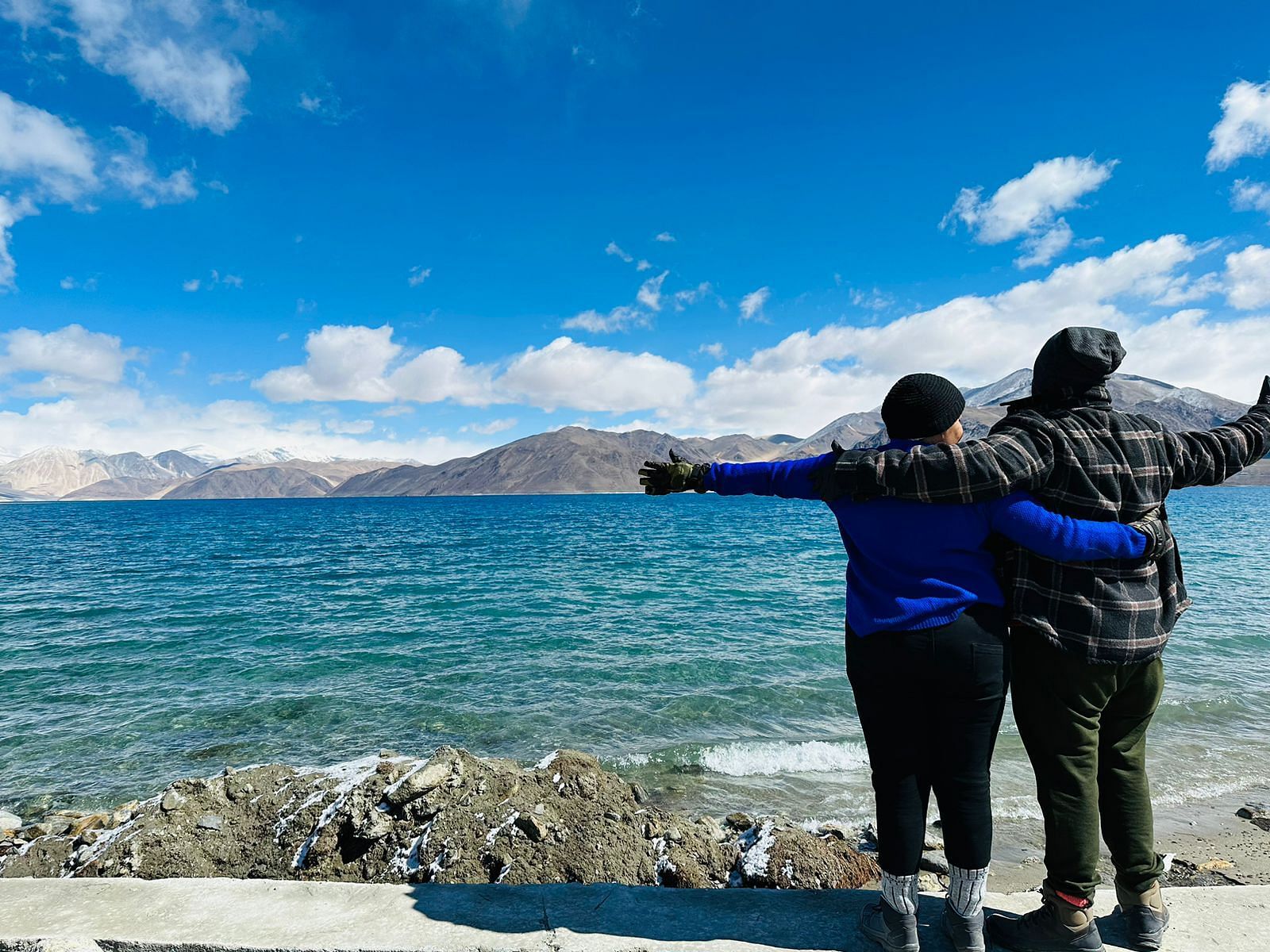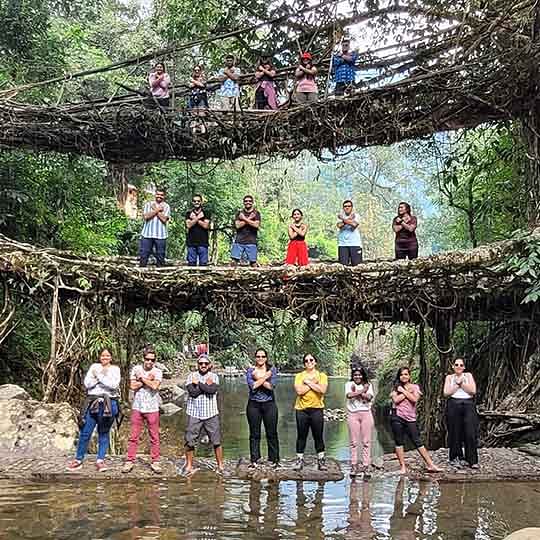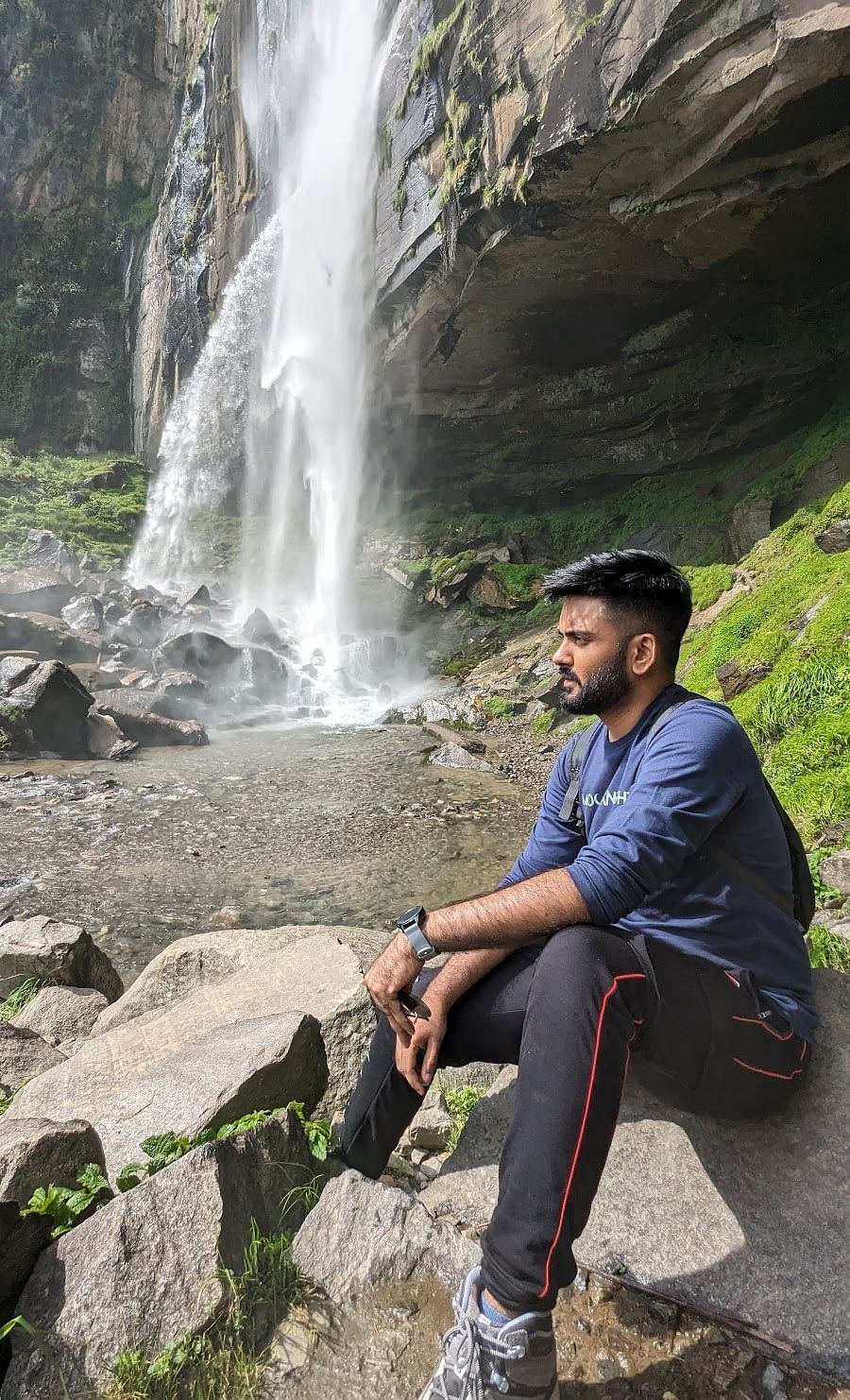Remember the famous Bollywood movie M.S.Dhoni – The Untold Story, based on the life story of famous Indian cricket captain – Mahendra Singh Dhoni? Now recall the song, where he and Sakshi are out exploring Aurangabad and spend some romantic moments in front of a structure that appears to be like the Taj Mahal.Well, that is “Bibi Ka Maqbara” which is the Taj Mahal in Aurangabad. It is also recognized by many other names like Mini Tajmahal, Dakkhani Taj, or the Taj of Deccan. Bibi ka Maqbara translates to “the tomb of the lady” and is another monument built in the memory of a Mughal Queen
Also Read: World’s Only No-Door Village – Shani Shingnapur Travel Guide
History of Mini Taj Mahal in Aurangabad
Why the name “Bibi Ka Maqbara”?
Bibi ka Maqbara was commissioned in 1660 by Aurangzeb, the then-emperor of the Mughals. It was named after his wife Dilras Banu Begum, who was also known as Bibi or a woman of noble birth. She was honored with this title by her son Azam Shah. Upon her death, her name was changed to Rabia-u-Durrani, or Rabia of the Age, after the noble Iraqi lady Rabia Basri. She was well-known for her kindness.
Dilras Banu was born into the royal family of Iran. She was the daughter of Shahnawaz Khan, who was the viceroy of Gujarat during that time. She was married to Aurangazeb in the year 1637 and became his first wife. Aurangazeb loved her dearly above everyone else. As per the historians, their wedding was one of the most extravagant weddings of the 17th century.
Aurangazeb and Dilras Banu Begum had five children together. But, after the delivery of their fifth child, Dilras died an untimely death, just like her mother-in-law – Mumtaz Mahal (Aurangazeb’s Mother).
Aurangzeb and Azam Shah, his eldest son, were deeply affected by the loss and went into a state of mourning. They did not appear in public for months and did not take charge of the state’s affairs. It took a great deal of effort for them to recover from their grief.
In 1660, just three years after her death, Aurangzeb commissioned the construction of the ‘Mausoleum of his wife’, located on the same site as the present-day Taj Mahal, the grandest monument built by his father.
Also Read: Secrets Of Skeleton Lake, Uttarakhand: Roopkund Dark History
Who Built The Taj Mahal In Aurangabad?
Although Aurangzeb wasn’t a big fan of architecture and didn’t want to build a huge monument like the Taj, his son Azam wanted something special to honor his mother’s name that would rival the Taj. Azam Shah kept trying to get his father to agree, and the Maqbara or Mausoleum was built within a decade or so after the Begum died, which is way faster than the twenty years it took to build the Taj.The Mini Tajmahal of Aurangabad is inspired by the world-famous Taj Mahal of Agra. Well, the designer of this Mini Tajmahal aka Bibi Ka Maqbara was Attaullah Rashidi. He was one of the three sons of Ustad Ahmad Lahori, the chief architect and the mastermind behind the Taj Mahal, who was also honored with the title of Nadir-ul-Asar (A Rare Gem of the Period) by Shah Jahan himself for his exceptional contribution.
Attaullah was perfect for the job as he had worked with his father during the construction of the Taj Mahal of Agra. He was an expert in metal design and knew Sanskrit and Persian as well. Attaullah and Hanspat Rai, an expert on construction materials and their use, together were responsible for the construction of the Taj Mahal in Aurangabad.
As per the inscriptions on the southern gate of Bibi Ka Maqbara, the construction of this monument cost around ₹665,283 and 7 annas (former currency used in India. 16 annas = ₹1). On the other hand, the original Taj Mahal was built around a whooping budget of ₹3 Crore.
The budget constraint was a major obstacle for the builders, which is clearly seen in the overall appearance of Bibi Ka Maqbara. So, when the construction of this monument was completed, many criticized it by calling it “the poor man’s Taj”.
The major reason for such a low budget was that Prince Azam Shah did not have all the riches of his grandfather Shah Jahan. He lacked the money to pay the skilled personnel who would do the job and to buy the expensive marble from Rajasthan. Additionally, Azam Shah’s father Aurangazeb was known for living a life with no comforts or luxury and was rigid when it came to spending money.
Shah Jahan, on the other hand, lived in the golden period of the Mughal Empire. During his prosperous reign, many precious stones were extracted from the Indian soil, which filled his treasure with all kinds of riches. This allowed him to commission one of the most spectacular monuments in the history of the Mughal Empire with the finest stone and skilled craftsmen.
Though the two monuments are separated by time, size, distance, etc, the Taj Mahal and Bibi Ka Maqbara have a lot more common emotionally. Both are a symbol of love and loss. The first monument – the Taj Mahal was built by Shah Jahan for his beloved wife – Mumtaz Mahal (mother of Aurangzeb), while the second monument Bibi Ka Maqbara was built by Azam Shah for his mother – Dilras Banu (wife of Aurangzeb). Both the ladies were known for their generosity, kindness, and soft nature in the chapters of history.
Also Read: Jatinga Bird Suicide Mystery: Unsolving Bermuda Triangle Of Birds
Features of the Bibi Ka Maqbara
The first glance of Bibi Ka Maqbara appears exactly like the Taj Mahal of Agra, but a little shrunken version. The architects and designers of this Taj Mahal in Aurangabad have worked a great deal to create the closest replica of the original Taj Mahal.The Bibi Ka Maqbara is situated in the middle of an enclosed space that measures 458 meters in length by 275 meters in width. There are many similar features in the Mini Tajmahal and the Taj Mahal of Agra like – water ponds, fountains, water channels, and wide courtyards and a raised square platform on which the main monument sits gracefully. surrounded with 4 strikingly similar minarets. It also has stairs on three sides leading to the tomb and the four beautiful minarets that surround the monument.
Just as the Taj Mahal has the Yamuna River flowing alongside, Bibi Ka Maqbara has the Kham River flowing alongside. The architects have also kept the classic features of any Mughal architecture which is the Charbagh-style garden with 12 doors for the free flow of the air. To the west of Bibi ka Maqbara is a mosque and on the east, there is the Aina Khana – a mirror chamber that has mirrors fixed on its doors.
The difference between the Taj Mahal and Bibi ka Maqbara is that the latter is not entirely made of marble, which gives the Mini Tajmahal a little dusty and rustic look. Only the central portion of the main mausoleum and the majestic dome are constructed in marble, while the walls and the other parts of the monument are made of lime and plaster.
The size of the crown-like onion-shaped dome is smaller. The lattice work on the walls, the intricate design of the windows, and the carved interiors are also a little different. The Taj Mahal in Aurangabad doesn’t have semi-precious stones inlaid in the design or the rich gold-plated work, which once attracted the raiders to the Taj Mahal of Agra.
No matter what the similarities and differences are between the Taj and the Bibi Ka Maqbara, each has its own charm. Even though it looks a lot like the Taj, the Mini Tajmahal is a stunning Mughal monument. It is surrounded by a gorgeous garden with tall cypresses, mangoes, rose bushes, and flowers of all kinds; also offers stunning city views, making it a stunning sight overall. Plus, it’s the only Mughal-built monument in the entire Deccan, so it’s also known as the Taj of Deccan.
Also Read: 3 Balinese Ghost Stories – Unfolding The Spooky Side Of Bali Culture
How To Reach Bibi Ka Maqbara?
Aurangabad is comparatively a smaller town, but has an airport and a railway station as well, due to its historical significance. Here’s how you can reach Bibi Ka Maqbara:- By Roadways: Aurangabad is well-connected by road to various cities in Maharashtra and neighboring states. Once you are in Aurangabad, you can reach Bibi Ka Maqbara by hiring a taxi or cab from the city center. The monument is located approximately 5-6 kilometers from the heart of Aurangabad, on the road to Daulatabad Fort.
- By Railways: Aurangabad has its own railway station, known as Aurangabad Railway Station (Station Code: AWB), now known as Chhatrapati Sambhajinagar. This station is well-connected to major cities in India, including Mumbai, Pune, Delhi, Hyderabad, and more. To reach Bibi Ka Maqbara from the railway station, you can take a taxi, auto-rickshaw, or a local bus. The monument is approximately 6-7 kilometers away from the railway station.
- By Airways: The nearest major airport to Aurangabad is Chhatrapati Shivaji Maharaj International Airport (BOM) in Mumbai, which is well-connected to both domestic and international destinations. Once you arrive at the Mumbai airport, you have the option to take a domestic flight to Aurangabad Airport (Aurangabad Airport, IXU). From the Aurangabad Airport, you can reach Bibi Ka Maqbara by taking a taxi or hiring a cab. The airport is around 12-13 kilometers away from the monument.
- Best Time To Visit: The best time to visit Bibi Ka Maqbara is during the winter months, from October to March, when the weather is pleasant and suitable for outdoor exploration. It is advisable to avoid the scorching summer months (April to June) as temperatures can be extremely hot and uncomfortable for sightseeing.
- Entry Fees: The entry fee to visit this historical monument for Indian Nationals is ₹25, while for Foreigners, it is approximately ₹300.
- Timings: Bibi Ka Maqbara is typically open to visitors from morning to evening. The standard visiting hours are from 8:00 AM to 8:00 PM.
Also Read: The Story Of Kodinhi Village, Kerala: The Land Of 400+ Twins
Other Historical Places to Visit Near Taj Mahal in Aurangabad
- Aurangabad Caves: These rock-cut Buddhist caves, dating back to the 2nd century, are located around 2 kilometers from Bibi Ka Maqbara. They feature intricately carved sculptures and ancient architecture.
- Panchakki (Water Mill): Located about 3 kilometers away, Panchakki is a historic water mill that was used to grind grains. It’s known for its serene garden and beautiful reservoir.
- Grishneshwar Jyotirlinga Temple: Situated approximately 29 kilometers from Bibi Ka Maqbara, this temple is one of the 12 Jyotirlingas of Lord Shiva and holds significant religious importance.
- Daulatabad Fort: Located around 15 kilometers from Bibi Ka Maqbara, this impressive hilltop fortress offers panoramic views of the surrounding area and has a rich history.
- Ellora Caves: A UNESCO World Heritage Site, the Ellora Caves, about 30 kilometers from Bibi Ka Maqbara, are renowned for their rock-cut temples and sculptures representing Hindu, Jain, and Buddhist faiths.
These nearby attractions provide a diverse range of historical, cultural, and religious experiences to complement your visit to Bibi Ka Maqbara.





